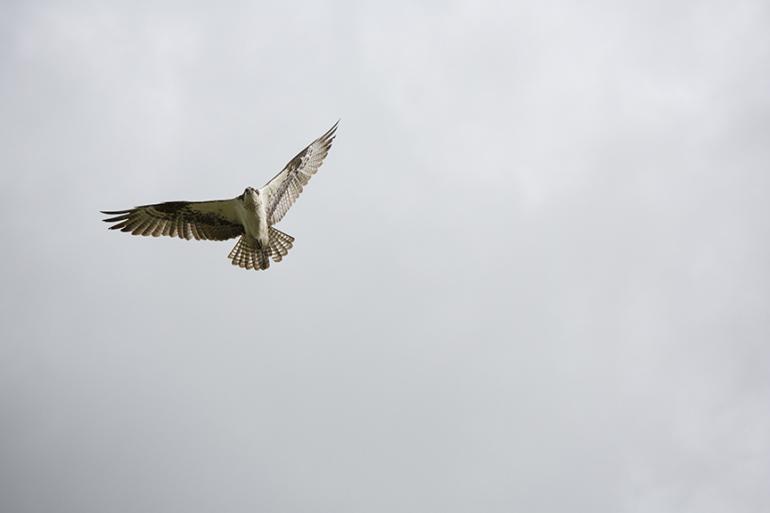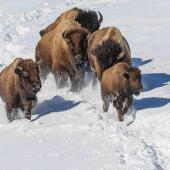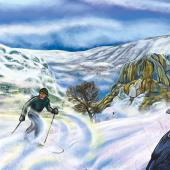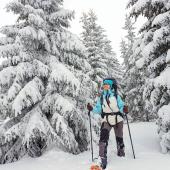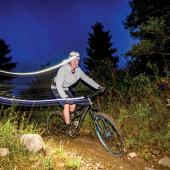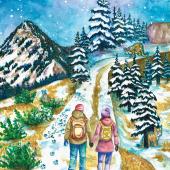Backcountry Spirits
In the deep green world of its backcountry, a hiker with a small pair of binoculars and an alert nature will get to know, up close and personal, many of the birds of Yellowstone Park. Along the streams fringed with willow and red dogwood you can expect the slate-blue dipper, the kingfisher rattling on upcreek, and a noisy pair of spotted sandpipers teetering on the rocks. Here bird song will literally surround you until it gets quite dark: the voices of the shy Lincoln’s sparrow, the masked common yellowthroat, the non-stop warbling vireo, the yellow-rumped warbler, the wood peewee, assorted flycatchers, and even the vociferous house wren. And, as you go, you will have the quiet pleasure of the gentle blue and white tree swallows flying in and out along the watery courses where the mayflies hatch.
If you wander into moist meadow areas be prepared for the sandhill cranes, for their loud rolling bugles and long grey forms, necks extended in flight. In these places you might see trumpeter swans, lots of ducks and teal (green- and blue-winged and cinnamon), long-billed snipe who will be winnowing overhead as dusk begins to fall, and raptors like the kestrel, the red tail, and the harrier who will range overhead looking for voles and things.
In the lodgepole and fir forests at the end of day, above the loud cascading song of the ruby-crowned kinglet, which is now fading at dusk, listen for the beautiful voices of our two woodland thrushes, the Swainson’s slightly nasal upward fluting, and the hermit thrush’s famous ethereal notes, those clear flutelike phrases that seem to trail off into the dark.
At night in your tent, the sounds of the dark world seem transparent: a few nighthawks far overhead, the deep half-dozen hoots of the great horned owl, and, if you are really lucky, a low, muffled string of hoos dropping slightly, of the great grey owl, our largest, most dramatic-looking owl. He has a massive, rounded head, a sizable tail, piercing yellow eyes and a face that can only be called spectral. He is diurnal, which means you might see this tame figure in the daytime on the trails, and you can often walk laughably close to his wild presence. Seeing a "great grey" is a little like seeing a grizzly – where he is we know wildness is. And in Yellowstone the person who gets back in earns such sights, still untouched and undestroyed for the hiking.

